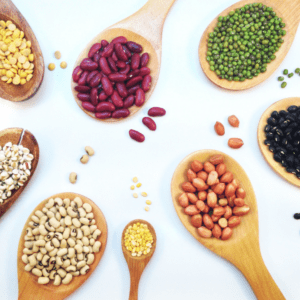At The Gut Health Doctor we’re all about the power of plants – but what if you’re one of the millions who suffer from a ‘sensitive’ stomach and feel like plants don’t agree with you? Good news: you can help train your gut to embrace plant diversity again and become fibre-fit (check out Dr Megan Rossi’s visual demonstration on Instagram).
Are you fearful of fibre?
Over 30% of adults experience a sensitive gut at some point in their life, whether that be constipation, burdensome bloating, IBS or even stomach upset from a bug or course of antibiotics.
In clinic, we find that many people with gut symptoms will often strip a lot of high fibre foods out of their diet (such as veggies and legumes) when their gut flares up in an effort to reduce gut activity. The issue is that many then tend to feel frightened about adding it back into their diet in case their symptoms pop back up. We get it: it can feel safer to stick with low-fibre foods such as meat, fish and refined carbs. But the thing is, restricting your diet in this way means that you’re unlikely to get enough of your gut microbes favourite nutrients such as fibre and other plant chemicals. The science shows that both you and your gut needs these in your diet daily to be your healthiest and happiest self.

















